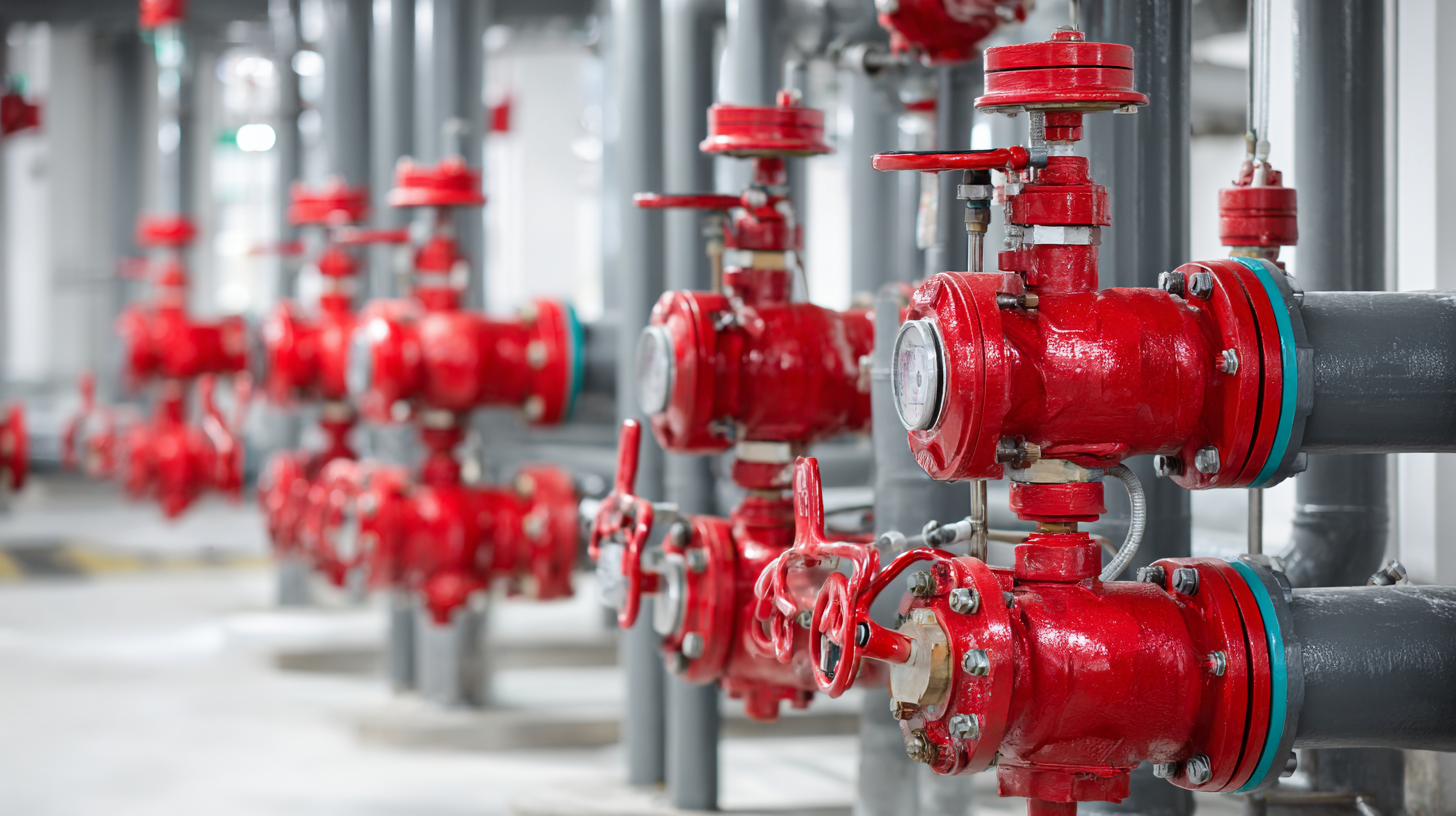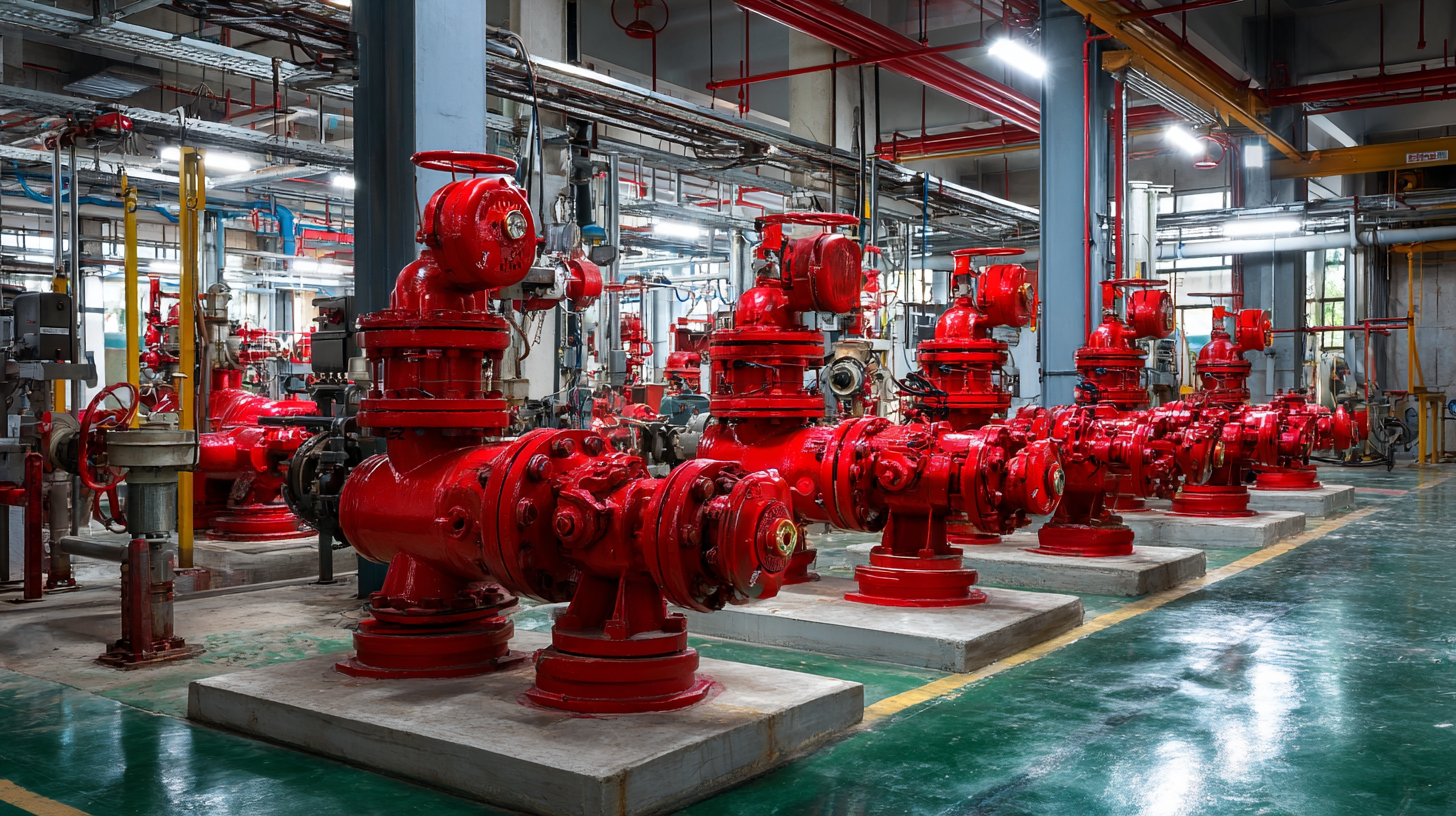Exploring Top Industry Applications of Best Fire Sprinkler Parts: Data-Driven Insights for Global Buyers
The global fire sprinkler market has been experiencing significant growth, propelled by increasing awareness regarding safety measures and regulatory mandates. According to a recent industry report by MarketsandMarkets, the fire sprinkler market is projected to reach USD 13.4 billion by 2025, expanding at a CAGR of 7.2%. As the demand for advanced fire safety solutions escalates, the role of high-quality Fire Sprinkler Parts becomes crucial. These components not only enhance the effectiveness of fire suppression systems but also ensure compliance with stringent safety standards. For global buyers, understanding the top industry applications and sourcing reliable, high-grade parts is paramount. This blog will delve into the leading applications of fire sprinkler systems, backed by data-driven insights, ultimately guiding purchasers toward smarter decisions in a rapidly evolving market.

Emerging Technologies Reshaping Fire Sprinkler Systems in 2025
As we approach 2025, emerging technologies are set to revolutionize fire sprinkler systems, making them smarter and more efficient. One notable trend is the integration of the Internet of Things (IoT) into fire protection solutions. Companies are developing IoT technologies that enable real-time monitoring and management of fire safety systems, providing crucial insights and responses when emergencies arise. This shift not only enhances the effectiveness of fire sprinklers but also allows for proactive maintenance, reducing the likelihood of failures during critical times.

Additionally, the upcoming NFPA 13 updates promise significant advancements in fire sprinkler safety and efficiency. These revisions prioritize modernized installation standards that reflect the latest technological innovations, which align with the growing demand for robust fire protection measures in various industries. With events like FeuerTrutz 2025 bringing together industry experts and stakeholders, there is a noticeable momentum toward adopting cutting-edge solutions that will shape the future of fire safety systems, ensuring that they meet the evolving needs of global buyers and end-users alike.
Critical Considerations for Selecting High-Quality Fire Sprinkler Components
When selecting high-quality fire sprinkler components, it is essential to consider several critical factors that ensure reliability and efficiency in fire suppression systems. According to a report by Grand View Research, the global fire sprinkler market is projected to reach $18.4 billion by 2025, emphasizing the growing demand for advanced sprinkler systems. Buyers must prioritize materials and certification standards; components made from high-grade metals and plastics are less susceptible to corrosion and wear, thereby increasing longevity and performance.
Additionally, compatibility with existing systems is crucial. A study by MarketsandMarkets indicates that the integration of innovative technologies such as IoT and automation is becoming prevalent, leading to more efficient fire sprinkler operations. It highlights the importance of selecting compatible parts that can easily integrate with these technologies to enhance monitoring and response times during emergencies. Smart sprinklers, backed by data-driven analytics, enable facility managers to optimize safety measures while complying with contemporary safety regulations and standards. As global buyers navigate this landscape, understanding these critical considerations will not only improve safety but also contribute to cost-effectiveness in the long run.
Exploring Top Industry Applications of Best Fire Sprinkler Parts
| Application Area | Top Components | Key Considerations | Market Trends |
|---|---|---|---|
| Residential Buildings | Sprinkler Heads, Valves | Quality Certification, Compliance Standards | Increasing Demand for Smart Homes |
| Commercial Spaces | Fire Pumps, Alarm Systems | System Compatibility, Maintenance Support | Focus on Fire Safety Regulations |
| Industrial Facilities | Piping Systems, Nozzles | Durability, Corrosion Resistance | Sustainability Initiatives |
| Healthcare Facilities | Control Valves, Monitoring Equipment | Patient Safety, Quick Response Time | Technological Advancements in Safety |
| Educational Institutions | Sprinkler Systems, Fittings | Cost-Effectiveness, Reliability | Government Funding for Safety Upgrades |
Data Analytics: Enhancing Fire Protection Efficiency and Performance
In recent years, the integration of data analytics into fire protection systems has shown significant potential in enhancing both efficiency and performance. For instance, innovations like high-efficiency ultrafine dry powder fire extinguishing agents leveraging advanced materials such as Fe/ZSM-5 zeolite are paving the way for superior firefighting capabilities. These developments underline the growing importance of data-driven insights in selecting the best fire sprinkler parts that can effectively support firefighters and reduce risks in various industries.
Moreover, the advent of smart technologies and big data analytics in monitoring and assessing fire safety is revolutionizing traditional approaches. A recent study on fire detection and anti-fire systems in smart agriculture showcases how IoT and embedded systems can provide real-time data, ultimately improving response times and mitigating hazards. This trend emphasizes the need for global buyers to consider not just the individual components, but the entire ecosystem of data-enabled fire safety solutions.
**Tips:** When evaluating fire sprinkler parts, look for those that incorporate advanced materials and smart technology. Additionally, consider the integration of data analytics in your assessment process to ensure you are investing in solutions that not only meet current safety standards but also enhance overall fire protection efficiency. Always prioritize systems that offer adaptability and scalability to stay ahead in today’s dynamic environments.
Global Market Trends Influencing Fire Sprinkler Part Innovations
The global fire safety industry is witnessing significant transformations driven by several market trends influencing innovations in fire sprinkler parts. As ecological concerns intensify, manufacturers are increasingly focused on developing sustainable materials and energy-efficient technologies. This shift not only enhances the effectiveness of fire protection systems but also aligns with global sustainability goals. Consumers are more aware than ever of the environmental impacts of their choices, prompting the industry to respond with eco-friendly options that do not compromise performance.
Tip: When selecting fire sprinkler parts, look for products that have certifications for environmental safety and performance, as these can ensure better compliance with global standards and regulations.
Moreover, advancements in technology are paving the way for smart fire sprinkler systems. These systems integrate IoT capabilities, allowing for real-time monitoring and analytics that improve response times in emergencies. The demand for smart technology in fire safety is reshaping how fire sprinkler parts are manufactured, making them more adaptable and efficient while meeting the stringent requirements of modern building codes.
Tip: Stay updated on the latest technological innovations in fire safety to ensure your systems are equipped with the most advanced features available. Consider consulting with industry experts to tailor a solution that best fits your specific needs.
Case Studies: Successful Implementations of Advanced Fire Sprinkler Solutions
In recent years, the advancement of fire sprinkler technology has led to significant improvements in fire safety across various industries. Case studies illustrate how these advanced systems not only reduce damage during fire incidents but also enhance safety protocols. According to a report by the National Fire Protection Association (NFPA), buildings equipped with fire sprinkler systems have a 50% lower chance of sustaining fire damage compared to those without. This statistic highlights the effectiveness of these systems in protecting property and lives.
One notable implementation is seen in the hospitality sector, where state-of-the-art fire sprinkler solutions have been integrated into newly constructed hotels. A case study conducted by the American Hotel and Lodging Association demonstrated that hotels with modern fire sprinkler systems experienced a remarkable 75% reduction in fire-related incidents. This has led to increased insurance savings and enhanced guest safety, proving that investing in premium fire sprinkler components is not only a regulatory requirement but a strategic advantage for business operations. The data-driven insights from these case studies are crucial for global buyers looking to ensure exemplary fire safety standards while optimizing their investment in fire protection technology.

